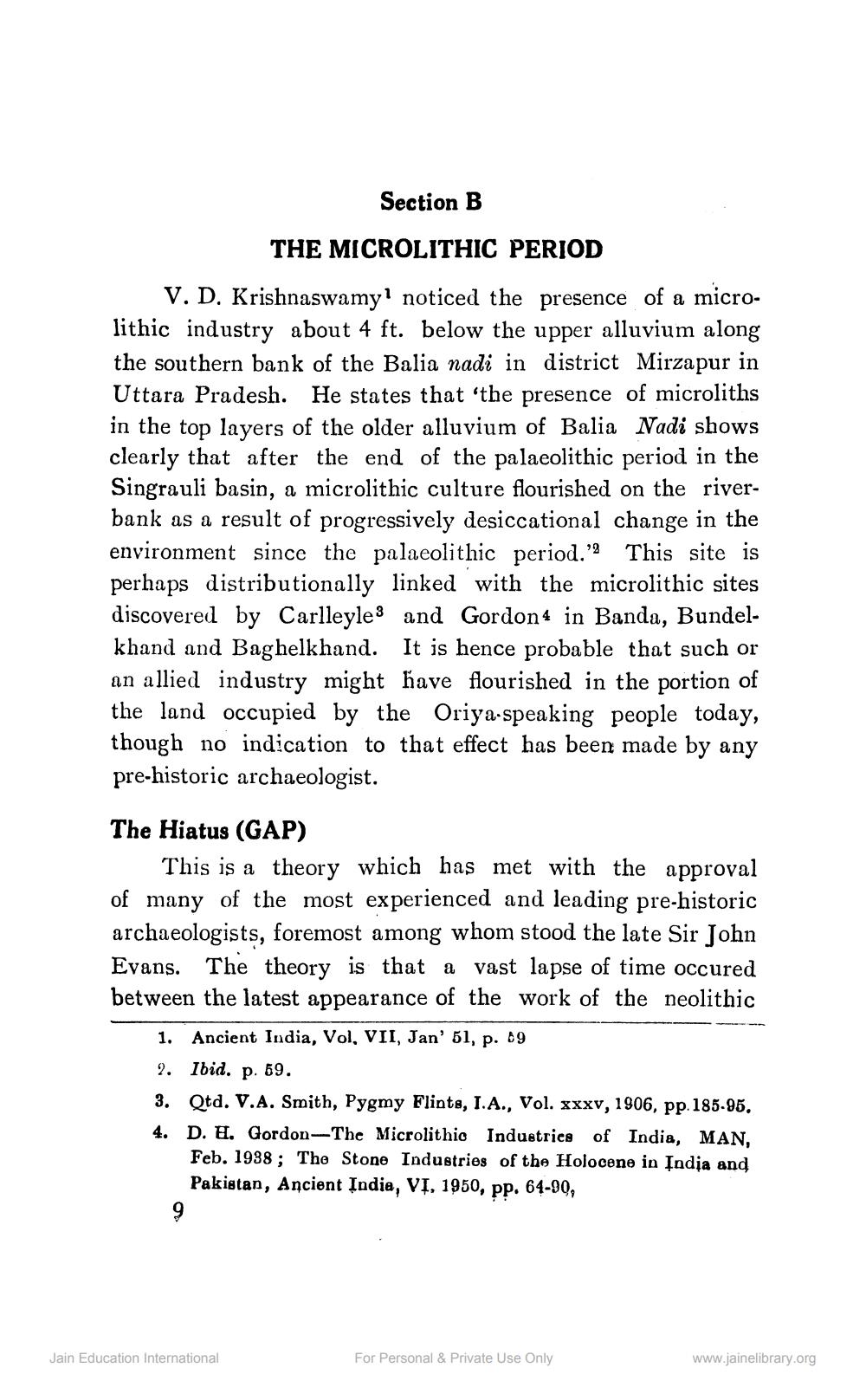________________
Section B THE MICROLITHIC PERIOD V. D. Krishnaswamy' noticed the presence of a microlithic industry about 4 ft. below the upper alluvium along the southern bank of the Balia nadi in district Mirzapur in Uttara Pradesh. He states that 'the presence of microliths in the top layers of the older alluvium of Balia Nadi shows clearly that after the end of the palaeolithic period in the Singrauli basin, a microlithic culture flourished on the riverbank as a result of progressively desiccational change in the environment since the palaeolithic period." This site is perhaps distributionally linked with the microlithic sites discovered by Carlleyle3 and Gordon4 in Banda, Bundelkhand and Baghelkhand. It is hence probable that such or an allied industry might have flourished in the portion of the land occupied by the Oriya-speaking people today, though no indication to that effect has been made by any pre-historic archaeologist.
The Hiatus (GAP)
This is a theory which has met with the approval of many of the most experienced and leading pre-historic archaeologists, foremost among whom stood the late Sir John Evans. The theory is that a vast lapse of time occured between the latest appearance of the work of the neolithic
1. Ancient India, Vol. VII, Jan' 51, p. 69 2. Ibid. p. 69. 3. Qtd. V.A. Smith, Pygmy Flints, I.A., Vol. xxxv, 1906, pp.185.95. 4. D. U. Gordon--The Microlithic Industries of India, MAN,
Feb. 1938; The Stone Industries of the Holocene in India and Pakistan, Ancient India, VĮ, 1950, pp. 64-90,
Jain Education International
For Personal & Private Use Only
www.jainelibrary.org




